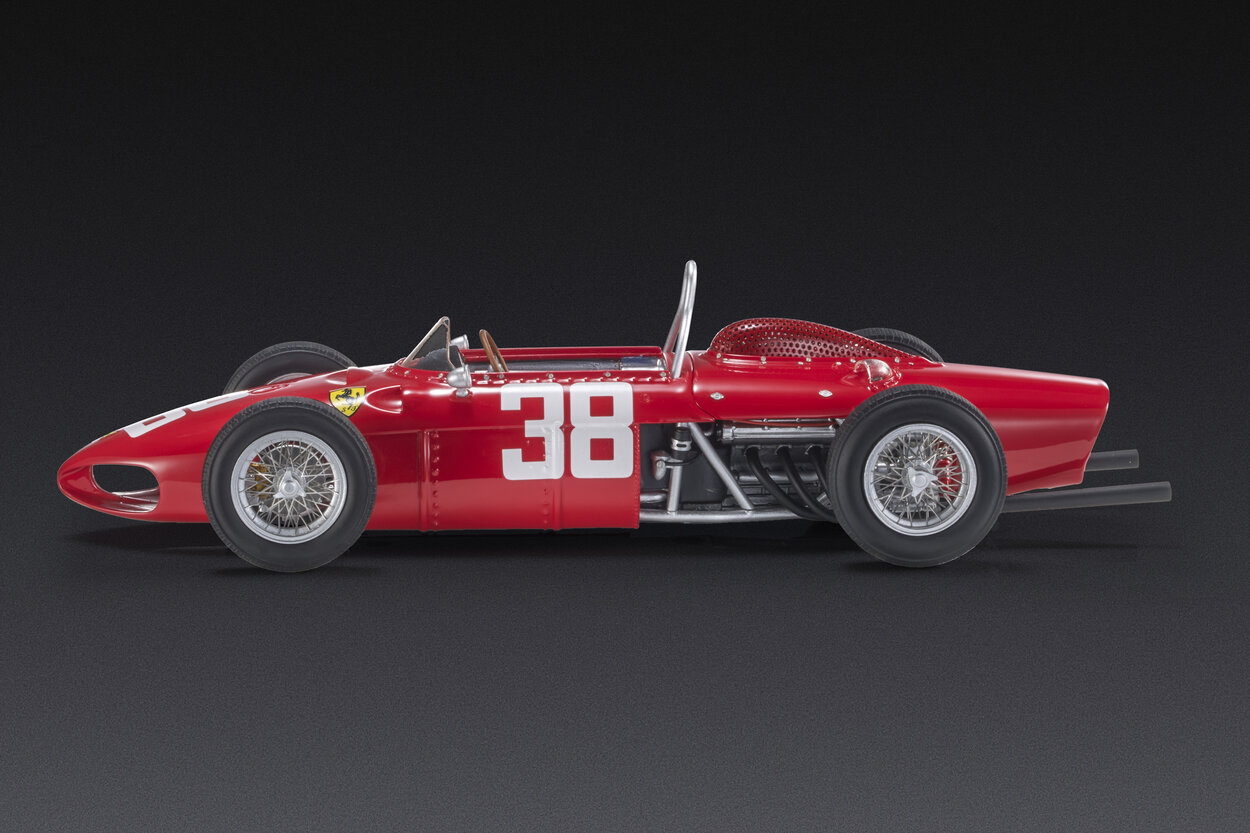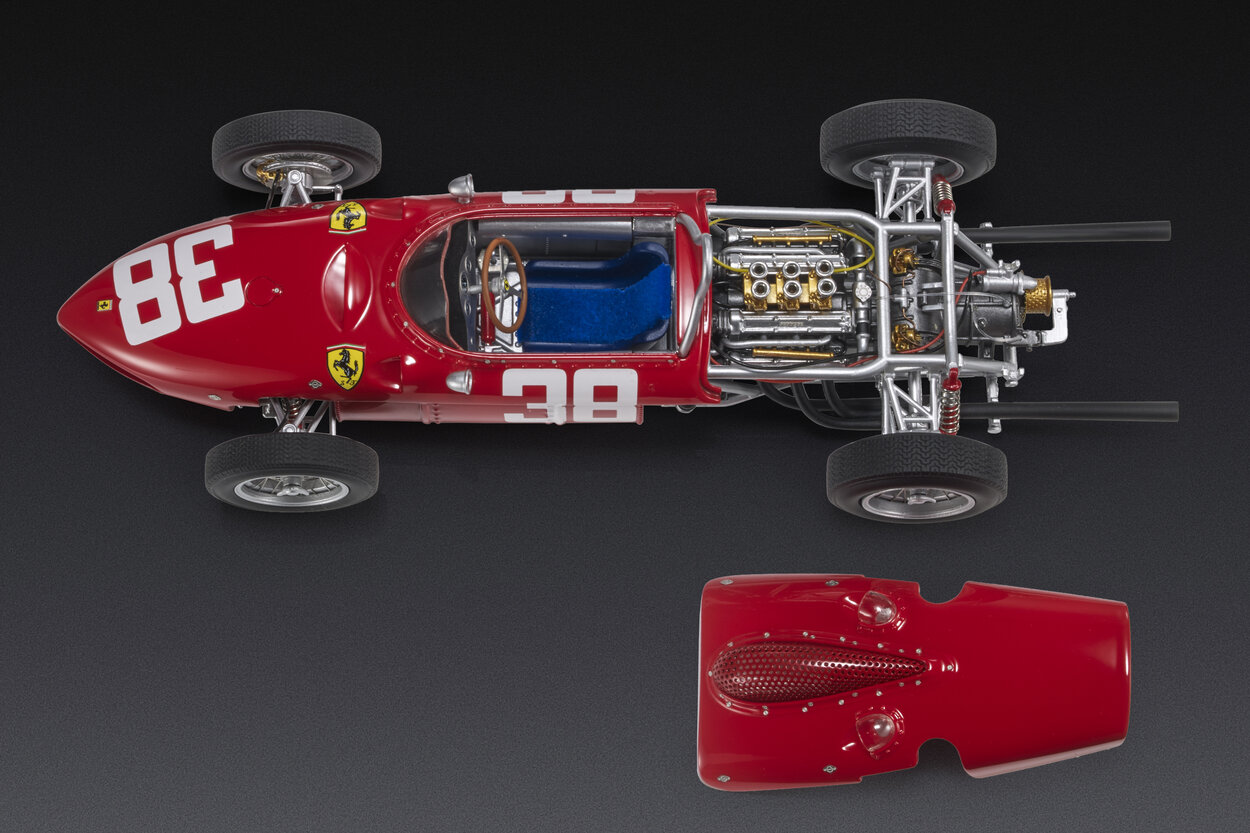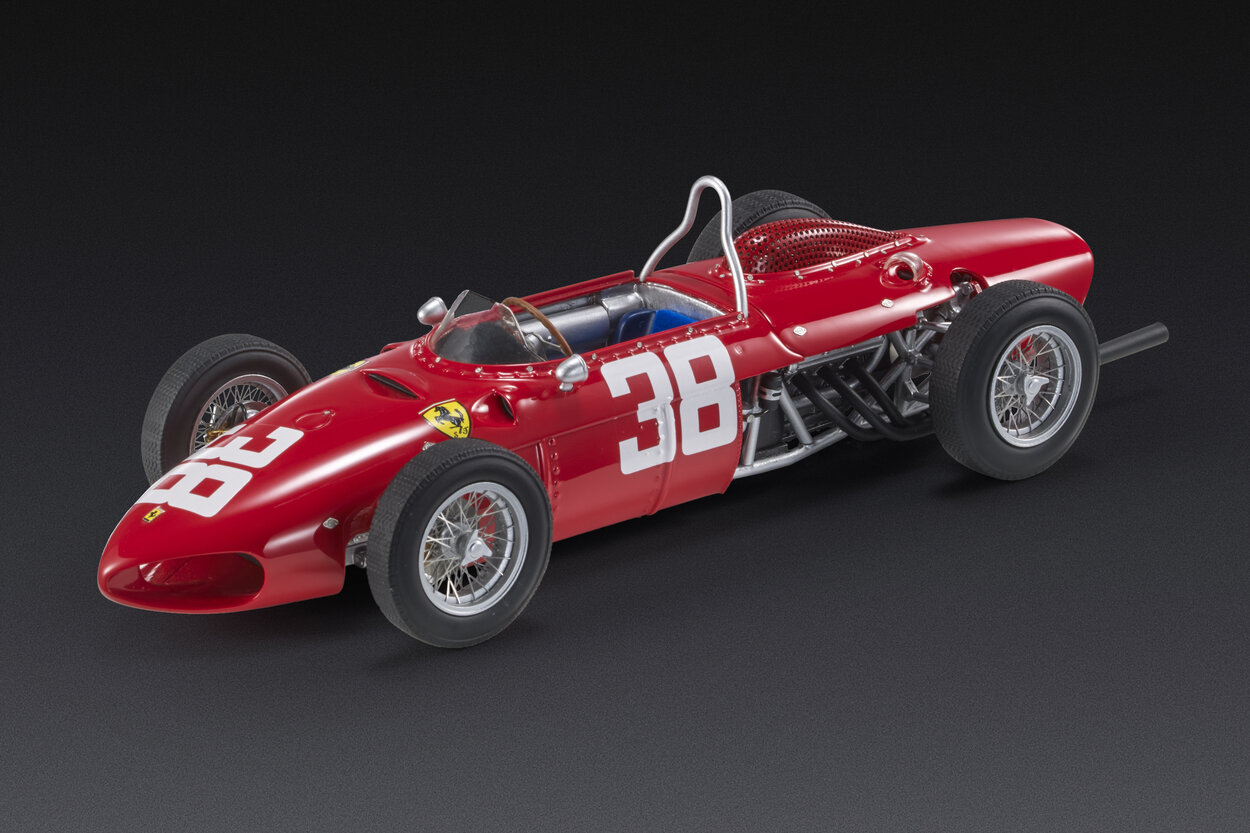Ferrari Dino 156
It’s the car of the turning point, the single-seater with which Enzo Ferrari surrenders to evidence and understands that the path paved by John Cooper, who placed the engine behind the driver, is the right one in terms of progress. For two years, Enzo Ferrari hesitated to understand if the novelty had taken hold and, consequently, if such a high financial investment required by so much innovation was justified. The four world titles won by Brabham and Cooper in two years gave him the answer he was looking for.
In reality, Ferrari also bought time because he knew that with the 1961 season, a new technical regulation would come into effect, which foresees naturally aspirated engines with a maximum displacement of 1500 cm3. And it is precisely from the proven 120° V6 engine called Dino, named after his eldest son that debuted in 1956, that the Chief Engineer of the Prancing Horse, Carlo Chiti, assisted by a young and newly hired Mauro Forghieri, starts designing the 156 F1, the first mid-engine Ferrari.

Drivers:
Phil Hill: The Californian is the 1961 world champion. Behind the wheel of the F156 F1, Phil Hill wins the Belgian and Italian Grand Prix. In five out of the seven races he competes in, he is the fastest in qualifying. In two others, he sets the fastest lap during the race. He clinches the title at Monza, on the day his teammate Von Trips tragically passes away.
Wolfgang von Trips: Taffy von Trips arrives at Monza as the favourite for the championship. He is expected to be the new world champion. Throughout the season, he won the Dutch and British Grand Prix and finished second at Spa and the Nürburgring. However, during the first lap of the Italian Grand Prix at Monza, he is involved in a horrific accident in which he loses his life. His teammate Hill becomes the world champion as a result.
Giancarlo Baghetti: With a Ferrari F156 F1 entered by the FISA – Federazione Italiana Scuderie Automobilistiche – the young Italian driver wins his debut race, the French Grand Prix.
Our model cars:

The chassis of the 156 is a lattice tubular frame and is directly derived from that of the 246, world champion in 1958, although at first glance, the two cars seem to belong to different eras. When designing the new car, characterized by two large air intakes on the nose that make it resemble a shark, Chiti has the opportunity to study up close a Cooper chassis that Enzo Ferrari secretly obtains from Mimmo Dei, the owner of Scuderia Centro Sud. Ferrari learns well from Cooper. At the end of the season, the 156 F1 is the new Drivers’ and Constructors’ World Champion.

